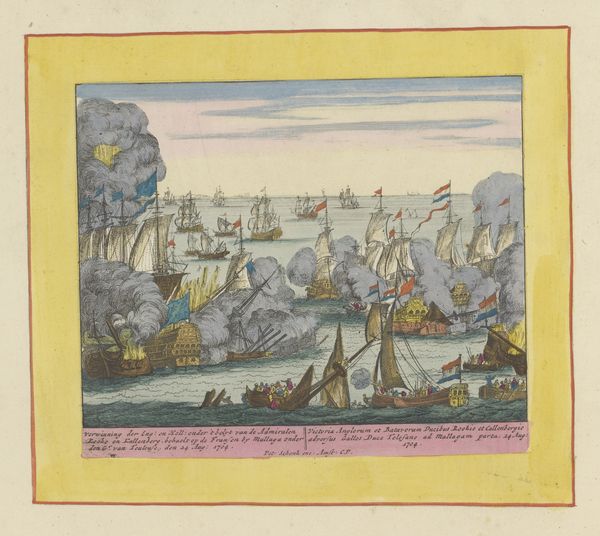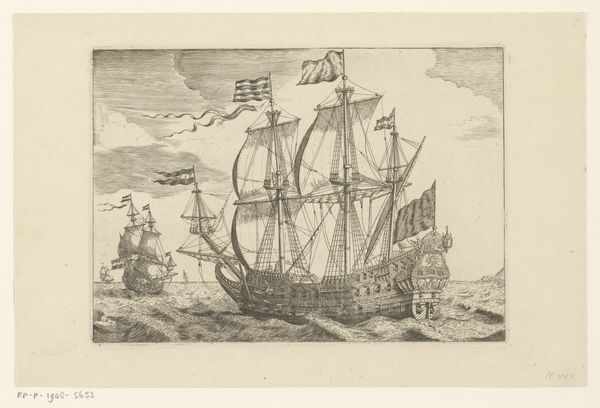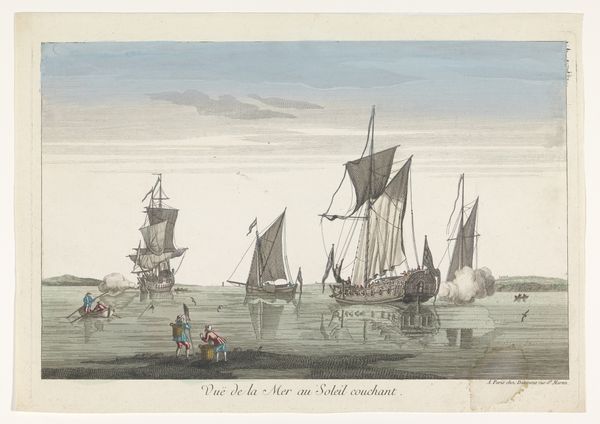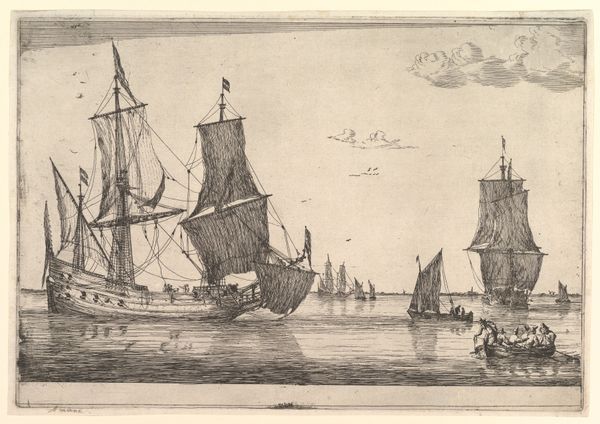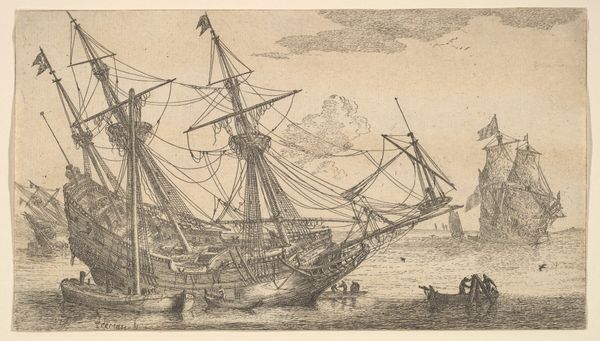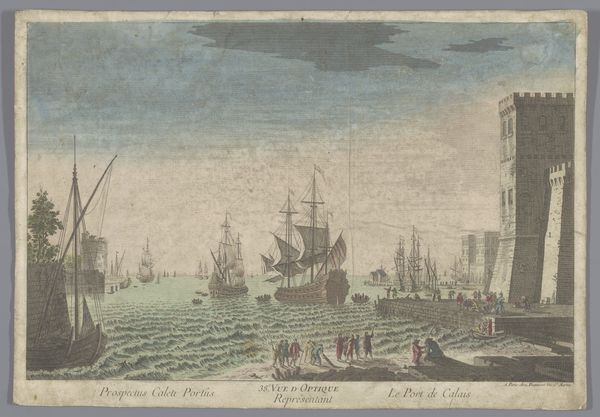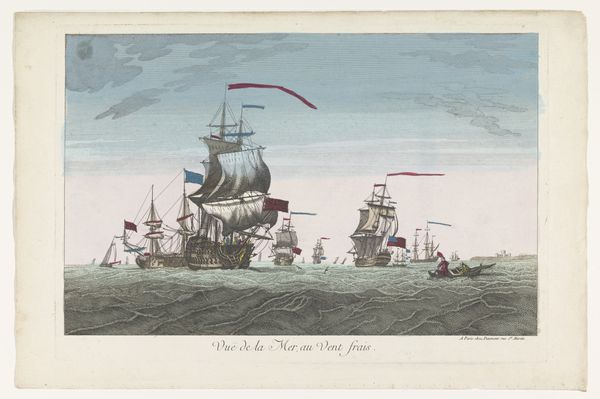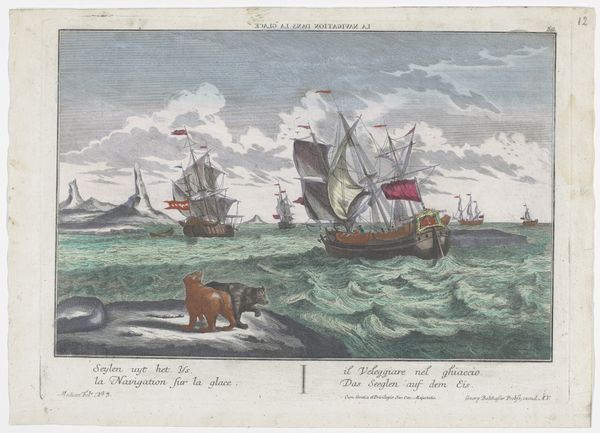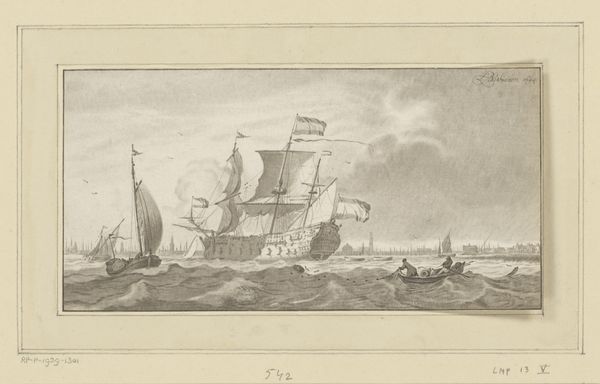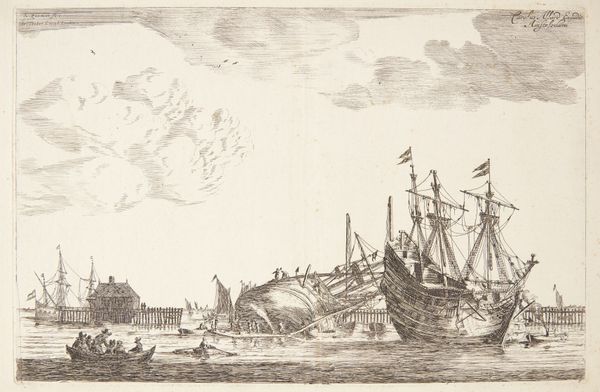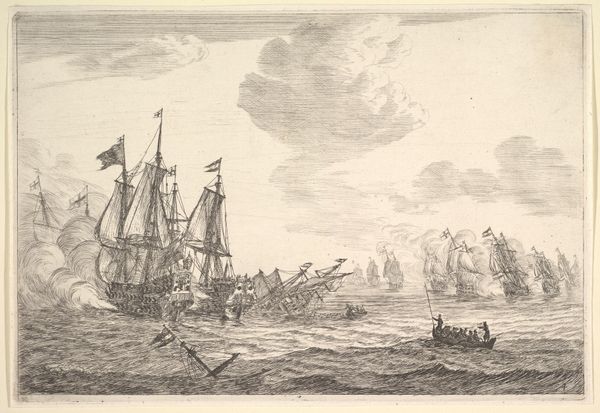
print, etching, watercolor
#
water colours
#
baroque
# print
#
etching
#
landscape
#
watercolor
#
coloured pencil
#
cityscape
#
watercolor
Dimensions: height 166 mm, width 255 mm
Copyright: Rijks Museum: Open Domain
Editor: This etching, "Toren van Belém in de rivier Taag gelegen" by Pieter van den Berge, probably created sometime between 1694 and 1737, presents a scenic view of the Belém Tower in Lisbon. I’m struck by the contrast between the imposing tower and the lively maritime activity. What catches your eye in this piece? Curator: What I see is a portrait of power dynamics rendered through landscape. The Belém Tower, a symbol of Portuguese maritime power during the Age of Exploration, dominates the scene. Yet, look closer: The bustling river, filled with diverse vessels, tells stories of trade, cultural exchange, and, undeniably, colonial exploitation. Consider the vantage point. Who is given the privilege to look, and from where? How might the local populations have perceived this imposing structure, versus the colonial traders? Editor: So, you're saying it's not just a pretty picture of a tower, but a representation of colonial power? Curator: Precisely. And the very act of depicting this scene – etching it, colouring it, disseminating it – reinforces that power. Who was this image intended for? How does it solidify a particular worldview, one that centres European dominance and expansion? The details, like the flags flown on the ships, speak to competing empires vying for control. What is omitted, or subtly included, might tell us even more. Consider who *isn’t* represented, or whose labor is implied but unseen. Editor: That makes me think about the people on those boats, their roles, and the larger system they were a part of. I never would have considered that! Curator: It's about recognizing the visual strategies employed to legitimize historical narratives. Understanding this print means looking beyond its surface appeal to interrogate the power structures it represents. Thinking intersectionally allows us to unveil these often obscured histories. Editor: This has completely changed how I see this image. It’s far more complex and unsettling than I initially thought. Thanks!
Comments
No comments
Be the first to comment and join the conversation on the ultimate creative platform.
